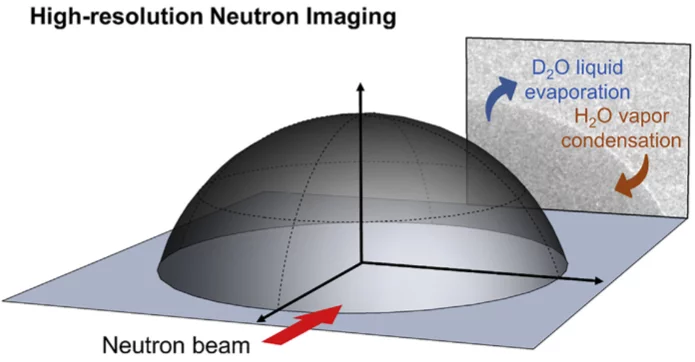Various imaging methods in materials research have pursued the characterization of material composition and its change in space and time. When it comes to liquid matter far from equilibrium, such as mixing and evaporating mixtures of solutes and solvents, of paramount importance in diverse solution-processing methods, the quantitative and in situ characterization remains challenging. Our research with the evaporating heavy water (D2O)droplet absorbing H2O vapor from the ambient air provides a proof-of-principle that high-resolution neutron imaging can spatiotemporally trace materials composition of multi-components. The unique ability of the neutron to see through materials selectively and discriminate hydrogen and its physicochemically similar isotope, deuterium, with the advances in the spatiotemporal resolution of imaging, will make neutron imaging another essential characterization method for liquid matter at nonequilibrium.
Facility: SINQ
Reference: JK Im et al, Matter 4, 2083 (2021)
Read full article: here


